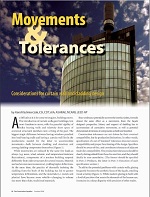Dew Point Analysis and Monitoring

The dew point meter in the exploratory opening and in the exterior wall affected by high humidity damage to interior millwork
It’s not always rain leakage, we find in our investigations as facade doctors. We sometimes find no traces of water intrusion, as opposed to water condensing inside, where it can damage moisture-sensitive materials, and contribute to microbial growth i.e. mold and mildew. In such a case, we conduct long-term hygro thermal monitoring of suspect assemblies.
The picture shows the exploratory opening and the dew point meter in the exterior wall affected by high humidity damage to interior millwork. We subsequently buried temperature and humidity sensors and closed the wall for two weeks, only to find out that the heat and moisture don’t mix well with interior wooden paneling. As the result of data analysis, the psychrometric conditions in this wall were found to be near Dew Point most of the time.
How to avoid such undesired situations?
Conduct hygro-thermal design analysis. This is why we conduct condensation risk assessments in early architectural design stages, comparing dew point temperature of air with interior surface temperatures of facade components. We model critical façade assemblies to verify the condensation resistance using the state-of-the-art computerized tools and applications. Calculation of dew point is easily done by hand, but the energy performance of the assembly or detail is often complex enough to require analysis simulation in software for CFD (computational fluid dynamics). The popular software used for this purpose are WUFI and Therm. Thermal modeling software would yield the map of interior surface temperatures and identify any potential tendencies of the make-op to accumulate moisture over time.

 Condensation Risk Assessment
Condensation Risk Assessment Facade Access
Facade Access Facade Engineering. How To Design a Functional Building Enclosure
Facade Engineering. How To Design a Functional Building Enclosure Facade Impact Resistance Manual
Facade Impact Resistance Manual Foggy Glass Disease
Foggy Glass Disease How To Write and Read a Forensic Report
How To Write and Read a Forensic Report Movements and Tolerances
Movements and Tolerances Review of Curtain Walls, Focusing on Design Problems and Solutions
Review of Curtain Walls, Focusing on Design Problems and Solutions Transitions: How to Design Facade Interfaces
Transitions: How to Design Facade Interfaces When You Need A Window – Solar Design
When You Need A Window – Solar Design
Leave a Reply
You must be logged in to post a comment.